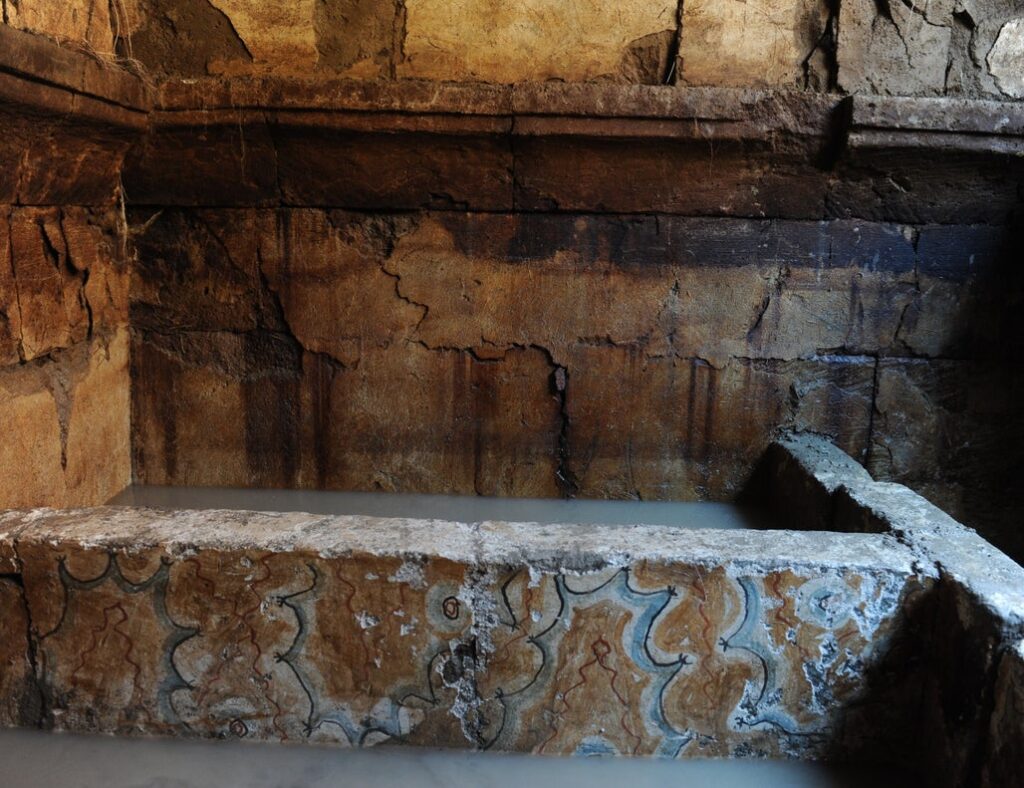Archaeologists have uncovered one of the best-preserved Greek tombs in Italy in the ruins of the ancient Greek colony of Cumae outside Naples.

Experts usually find the remains of the region’s elite buried in long-sealed tombs but inside one such vault, the team discovered an intricate mural that sheds new light on a forgotten past.
One picture shows a naked servant bearing a jug of wine and a vase. Archaeologists think the other walls show guests at a banquet, not least because other elements of the festive meal can also be distinguished.
The unclad servant, the ancient Romans regarded nudity as a natural state of being. Furthermore, art that we would call erotic these days was not rare in the domiciles of the upper class.
About 400 tombs have been excavated in the Cumae necropolis so far - 80 funeral monuments. "For this chronological phase, most of the tombs were painted white and red," Priscilla Munzi, CNRS researcher at the Jean Bérard Center, told Haaretz. "A tomb excavated a few years ago had the funeral boxes painted in imitation marble (onyx). Only the tomb excavated in June was painted with figurative scenes."

As for Cumae, ancient Greek sources say it was the first colony town established by the ancient Greeks on mainland Italy, sometime in the eighth century B.C
Another powerful city founded by the ancient Greeks in Italy was Poseidonia, where archaeologists found monumental construction and precious ceramics imported from Greece and unusual tombs.
Thanks to its fertile environment, Cumae would become a prosperous city controlling its area of the coast and growing to about twice the size of Pompeii. (Mount Vesuvius lies smack between Cumae and Pompeii; while Pompeii and Herculaneum were simultaneously destroyed and preserved by volcanic ash emissions, Cumae was 50 kilometres from the volcano; at most, it might have suffered a dusting, Munzi says.)
This seaside hamlet, 25 kilometres or 15 miles east of the modern city of Naples on the Mediterranean coast, was also the stomping ground of the famed Cumaean Sibyl, a prophetic priestess of the Apollo cult.
EGYPT: The AMAZING photos of the tunnels archaeologists believe may lead to Cleopatra's tomb


